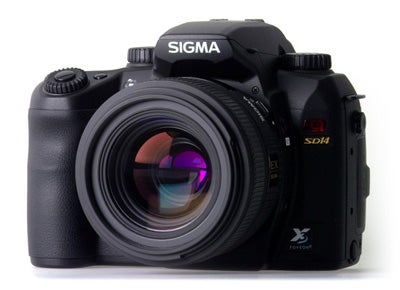The 14-megapixel SD14 is the third DSLR from Sigma to employ the unique triple-layered Foveon sensor. Has the company got it right this time?
Sigma SD14 Review
Image Quality
How Many Pixels?
When it comes to the SD14’s image quality we probably have to decide first of all exactly what type of images we’re looking at. In the past Sigma would describe its cameras in terms of the number of pixels on the sensor, so the SD10 was described as a 3.4MP camera, capable of delivering an image equivalent to 10MP thanks to its triple-layered Foveon sensor. With the SD14, Sigma has dropped any reference to the 4.64 million pixels on the 3-layer sensor and decided to simply describe it as a 14MP camera instead – perhaps to avoid confusion, or possibly to play the ‘numbers game’, where consumers think a higher resolution equals ‘better’ images.
Unfortunately, regardless of what Sigma chooses to say, Adobe Photoshop’s Camera Raw plug-in thinks differently and opening up a Raw file in Photoshop gives an image measuring 2640×1760 pixels – a total of 4.64 million pixels. The good news is that images are generally pleasing at this resolution, with crisp edges and good detail making it possible to enlarge shots recorded at low ISO settings to an A3 print size.
Poor JPEG Quality
The same cannot be said of 14MP JPEG files, which stretch Sigma’s resolution claims somewhat. The problem appears to be the interpolation required to generate this file size, which results in ‘jaggies’ appearing along the edge of curved image elements and an overall softness that obliterates fine detail. Contrasting with this it’s noticeable that well-defined, high-contrast edges receive a significant level of sharpening, producing hard outlines that make the edge appear as if it’s been cut out with a sharp scalpel. Hard edges and a lack of detail just isn’t a pleasant combination.
Noise Control
We have few complaints regarding noise at the lower ISO settings though, which is minimal up to ISO 400. However, at ISO 800 unusual purple and yellow ‘blotches’ start to creep into the image. This isn’t the granular noise we are used to seeing in other cameras, but distinct patches of false colour that begin to disrupt neutral tones in an A4 print. At ISO 1600 things are worse still, with many shots exhibiting distinctly blue shadow areas that are obvious even when viewed as thumbnail images.
White Balance
This isn’t helped by an automatic white balance system that often can’t quite make up its mind what colour balance to set, with consecutive shots of the same scene commonly displaying two different colour biases. However, to end on a positive note the SD14’s metering system is a match for most subjects, so at least you can rest assured that your images will be correctly exposed. It’s just a shame about everything else…





